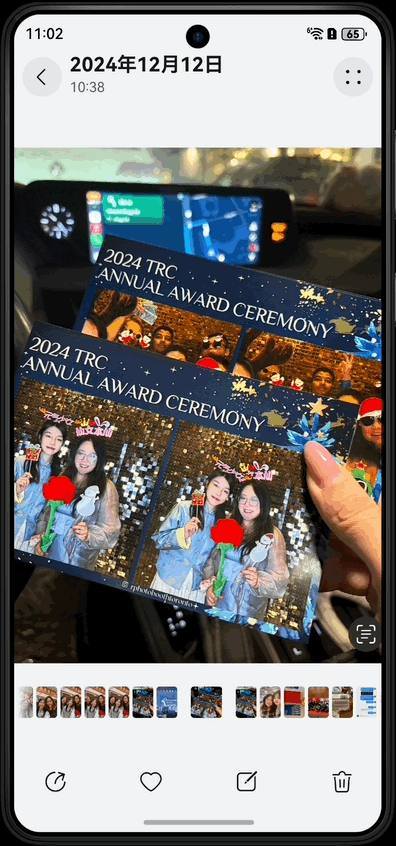
ArkMemory
Intelligent Generative Timeline and Interaction
Overview
ArkMemory is an innovative UX solution leveraging AI to intelligently organize and visualize personal digital histories, significantly enhancing users' efficiency and interaction with digital data.
Type
AI product design
Timeline
2024.12-2025.1 (2 months)
My role
Product designer
Responsibilities
Product strategy, User User Research, UI/UX Design, Prototyping
*Due to confidentiality agreements, sensitive details have been either omitted or intentionally blurred in this case study. All views expressed here are my own and do not necessarily reflect those of the Huawei Human-Machine Interaction Lab.
Results
Users completed file retrieval tasks 35% faster in user testing.
42% increase in satisfaction scores related to finding past photos/documents.
Timeline feature was engaged with by 75% of testers during scenario walkthroughs.
Design Opportunity
How might we help users effortlessly navigate, recall, and connect their fragmented digital memories in a more human, intelligent way?
As users accumulate massive amounts of data across devices and apps, the lack of intelligent tools to connect and recall this information creates friction in user experience—and limits the long-term value of personal data. ArkMemory explores a new paradigm of AI-powered interaction that enables deeper memory recall, context re-linking, and generative summarization.
Background
Modern smartphone users generate vast amounts of fragmented digital data—photos, files, chats, calls, posts—making it difficult to recall, locate, and manage information. Despite rich behavioral trails, today’s systems do not help users reconstruct meaningful connections between data across time or apps.
UX Challenge
Users experience cognitive overload when trying to manage dispersed digital data. They waste time searching, forget where things are stored, or lose context between files, photos, and messages. Existing systems treat data as isolated units, not part of a memory ecosystem.
User Research
47% of employees have worked on the wrong file version, reducing efficiency and increasing error. (CIO Insight)
44% of employees spend significant time daily just searching for files. (TechRepublic)
"Digital Amnesia": Research shows people remember where data is stored more than the data itself.
Qualitative feedback
Users experience cognitive overload when trying to manage dispersed digital data. They waste time searching, forget where things are stored, or lose context between files, photos, and messages. Existing systems treat data as isolated units, not part of a memory ecosystem.
“I constantly forget where I stored different versions of my files.”
Monet Goode
“Remembering the origin or context of images or messages after a while is challenging.”
Keith Finley
“I spend too much time tracking down what I've already done or shared across apps.”
Channing Lee
Key Insight
Users need intuitive tools to trace back actions and data relationships across platforms. AI-driven contextual memory could reconstruct user intent and behavior over time.
Define Problem
How might we simplify users’ management and recall of fragmented digital data to enhance productivity and reduce cognitive load?
Hypothesis
If we create a generative timeline that intelligently links and summarizes past behaviors and digital content, users will navigate their history more effectively and feel more in control of their data.
Design Thinking
If we create a generative timeline that intelligently links and summarizes past behaviors and digital content, users will navigate their history more effectively and feel more in control of their data.













